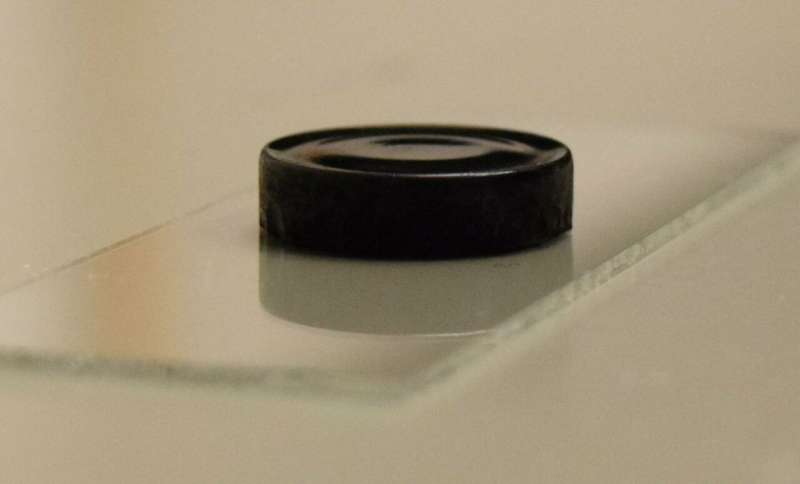Researchers create fireproof, self powered sensor

McMaster researchers, working with partners at other universities, have created a motion-powered, fireproof sensor that can track the movements of firefighters, steelworkers, miners and others who work in high-risk environments where they cannot always be seen.
The low-cost sensor is about the size of a button-cell watch battery and can easily be incorporated into the sole of a boot or under the arm of a jacket—wherever motion creates a pattern of constant contact and release to generate the power the sensor needs to operate.
The sensor uses triboelectric, or friction-generated, charging, harvesting electricity from movement in much the same way that a person in socks picks up static electricity walking across a carpet.
The sensor can track the movement and location of a person in a burning building, a mineshaft or other hazardous environment, alerting someone outside if the movement ceases.
The key material in the sensor, a new carbon aerogel nanocomposite, is fireproof, and the device never needs charging from a power source.
"If somebody is unconscious and you are unable to find them, this could be very useful," says Ravi Selvaganapathy, a professor of mechanical engineering who oversaw the project. "The nice thing is that because it is self-powered, you don't have to do anything. It scavenges power from the environment."
The research team—from McMaster, UCLA and University of Chemistry and Technology Prague—describes the new sensor in a paper published today in the journal Nano Energy.
The researchers explain that previously developed self-powered sensors have allowed similar tracking, but their materials break down at high temperatures, rendering them useless,
A self-powered sensor is necessary in extreme heat because most batteries also break down in high temperatures. The researchers have successfully tested the new technology at temperatures up to 300C—the temperature where most types of wood start to burn—without any loss of function.
"It's exciting to develop something that could save someone's life in the future," said co-author Islam Hassan, a McMaster Ph.D. student in mechanical engineering. If firefighters use our technology and we can save someone's life, that would be great."
The researchers hope to work with a commercial partner to get the technology to market.
More information: Abdelsalam Ahmed et al. Fire-retardant, self-extinguishing triboelectric nanogenerators, Nano Energy (2019). DOI: 10.1016/j.nanoen.2019.02.026

















